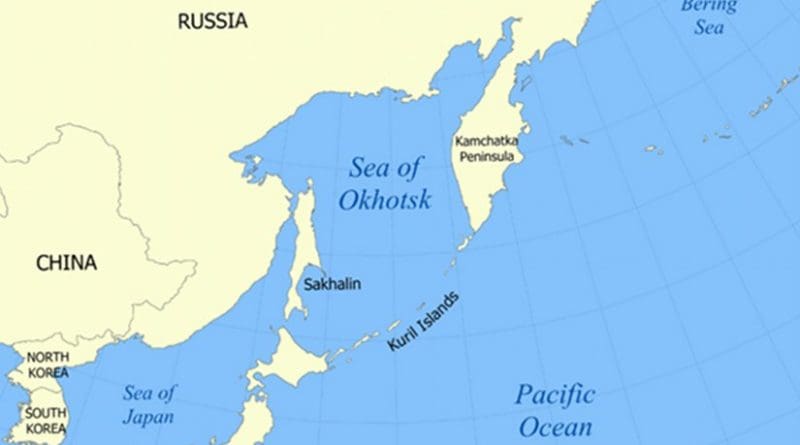Russia’s Ainu Community Makes Its Existence Known – Analysis
By Paul Goble
In addition to the Siberians, another indigenous nationality has surfaced in the Russian Federation east of the Urals in the 2010 census – the Ainu – one whose small number – approximately 100 — bely the potential political and geopolitical significance of an ethnic community most of whose members are in Japan.
On the one hand, the recent earthquake and tsunami have focused attention on Japan, increasing the importance of all things that connect that country with others, including Russia. And on the other, because the Ainu live among other places in the Kurile Islands, the Ainu of Russia are likely to come to play a role in that dispute between Moscow and Tokyo.
Indeed, Russian scholars say, the very name Kurile derives from the Ainu word “Kuru” which simply means “people,” an origin that Russian officials are certain to point to in order to bolster Russian claims to these islands, especially now that Moscow is acknowledging that there are Ainu in Russia itself.
During preparations for the census, the Inforos.ru portal notes, the Moscow Institute of Ethnology and Anthropology noted that “despite the absence [of this group] in the official enumeration of Russian peoples, part of our fellow citizens firmly continue to consider themselves Ainus” (inforos.ru/ru/?module=news&action=view&id=27280%20).
In Russian investigations beginning in the 18th century, the Ainu of the Russian Far East were often called Kamchadal Kurilites rather than Ainu because the term Ainu itself derives from the Ainu word “man” or “worthy man” and typically was connected with “military actions” and achievements.
Although the Ainu people have been indigenous to the area of the Far East and Japan for at least 7,000 years, Russian scholars say, “in Japan, the Ainus are considered ‘barbarians’ … and social marginals,” because they speak a language different from and look entirely different than the Japanese.
These same scholars report that “at the end of the 19th century,about 1500 Ainu lived in Russia,” but “after World War II, they were in part expelled and in part left on their own with the Japanese population.” Many of the others assimilated to the ethnic Russian population of the Russian Far East.
“According to the assertions of the Kamchadal Kurilites”—or Ainu of Russia – “all the names of the islands of the southern area were given by the tribes of the Ainu which at one point in the past occupied these territories.” Thus, Russian commentators say, “it is very change to say” that the Ainu were never there as some Japanese writers do.
That matters, these Russian commentators say, because “there are Ainus in Russia, an indigenous people which also has the right to consider these islands their own immemorial lands.”
One of these commentators, P. Alekseyev, argues that the Ainu should play a role in the resolution of the dispute over the Kurile Islands. “For this,” he says, “it is necessary to permit the Ainu (who were expelled by the Soviet government to Japan in 1945) to return from Japan to the land of their ancestors,” land that includes the Kuriles and much of the Russian Far East.
Russia “has neither people nor means fo rhte development of Sakhalin and the Kuriles, but the Ainu do,” Alekseyev says. Consequently, their return would “give a push to the economy of the Russian Far East” especially if there were formed for them “a national autonmy” within Russia that would embrace the Kurile Islands as well.
At the very least, Alekseyev argues, the Ainus now in Japan, precisely because they used to be “our citizens” and because “they were never allies of Japan and never will be” could become “the allies of Russia” as far as the Kuriles are concerned and held “liquidate” the present focus on the southern Kuriles in the Russian-Japanese relationship.
The Ainu of Russia have been pressing for official recognition as a nationality for some time. There were a spate of articles about them in the early 1990s, and after the Japanese recognized the Ainu as a distinct nationality in 2008, the Ainu of Kamchatka pressed for local recognition there (www.rg.ru/2008/04/03/reg-dvostok/ainu.html).
Now, especially in the wake of the natural disasters in Japan, the Ainus of Russia are pressing for greater recognition. There is now a Russian Association of the Far-Eastern Ainu (RADA as its Russian acronym) headed by Rechkabo Kakukhoningen (Boris Yaravoy), which is pressing the Ainu case.
For more details on this movement, its goals and its prospects, see among other sources, see among other articles, rusk.ru/st.php?idar=44728, tron.ru/ainu/rada/, tron.ru/ainu/kuril/dom.htm, and zvezdolettv.blogspot.com/2009/01/10.html?zx=b017943a71c2ad03,)


How many Ainu live today in Sakhalin , Kuril islands and Kamthaka?